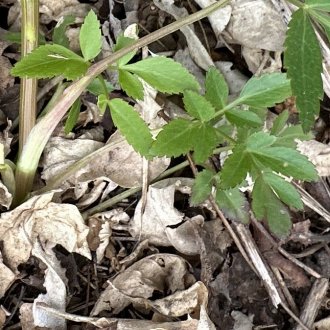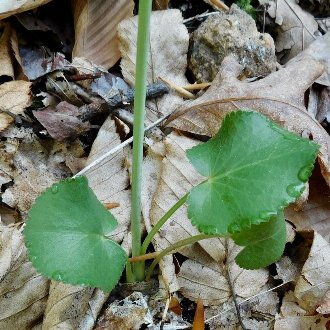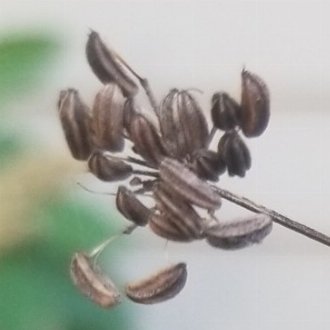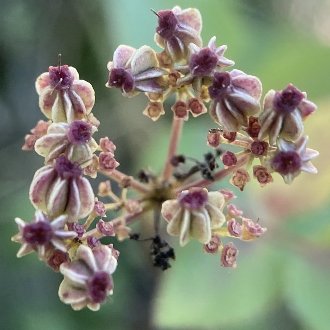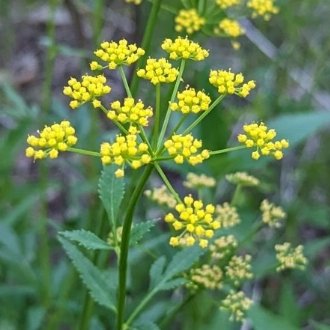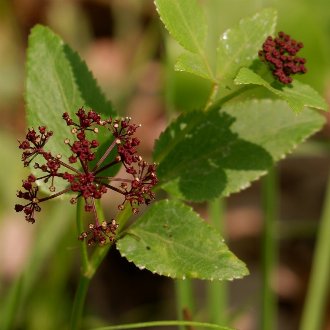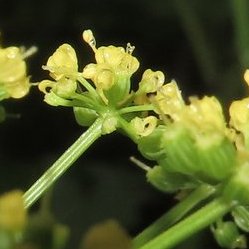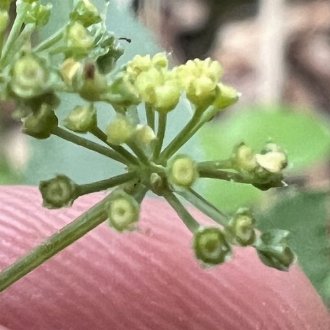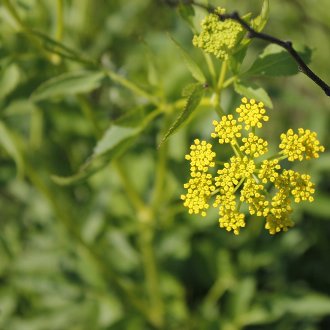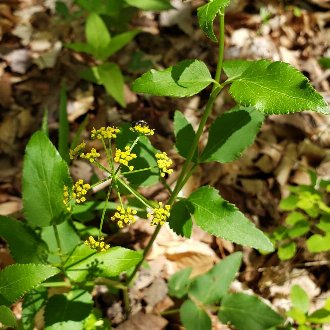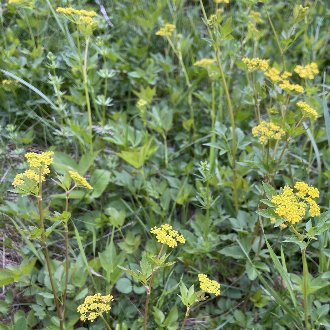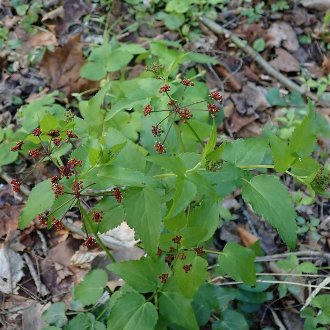Golden Alexanders vs Meadow Parsnip
These perennials can overlap in habitat and are easily confused where their ranges overlap, especially the yellow-flowering Thaspium trifoliatum var. aurea which is more common in most regions. The species are easily distinguished by seeds and basal leaves, and with a close look, by flowers. Zizia aurea ranges much farther north and slightly farther west, has slightly higher light needs, prefers moister conditions, and is more restricted to a narrow range of neutral-to-slightly acidic soil pH. Thaspium trifoliatum ranges into deeper shade, occurs in a broader range of soil pH, and prefers drier conditions.
Golden Alexanders (Zizia aurea) | Meadow Parsnip (Thaspium trifoliatum) |
A carrot-family perennial of moist to mesic, sunny areas, with yellow blossoms, native to eastern North America. | A carrot-family perennial found mostly in woodlands, native to the eastern US. |
Although seedlings initially grow one or more simple leaves, the basal leaves of mature plants are compound, and often doubly-compound. Photo © Rochelle Davis, CC BY 4.0. | Basal leaves of all plants are simple (not compound.) Photo © Michael J. Papay, CC BY 4.0. |
Seeds are ridged but not winged; ridges only project outward slightly from the seed body. Seeds look longer and narrower at a glance. Photo © Kaden Slone, CC BY 4.0. | Seeds are winged, with ridges forming into flat extensions that project quite far outward from the seed body. Wings make seeds look a little rounder at a glance. Photo © Bonnie Semmling, CC BY 4.0. |
Plants always have yellow flowers. Photo © Skyler Principe, CC BY 4.0. | Plants often have yellow flowers, but some populations (var. trifoliatum) flower in a dark maroon or burgundy color. Photo © Bonnie Semmling, CC BY 4.0. |
Central flower of each umbellet (small cluster within the large cluster) is attached directly without a stalk, or with an extremely short stalk. This often leads umbellets to appear more flat-topped. Photo © Mila B, CC BY 4.0. | All flowers, including the central flower in each umbellet, has a long stalk. This often leads umbellets to appear more round-topped. Photo © Nathan Aaron, CC BY 4.0. |
Slightly more restricted to sunnier habitats. Found in forest openings but less likely in rich, closed-canopy forests. Photo © Stella Fish, CC BY 4.0. | Ranges into deeper shade; more likely in rich mesic forests. Usually absent from sunny habitats except in the north of its range. Photo © Lily, Public Domain. |
Plants may be solitary, but are more likely to form dense colonies. Photo © Peter Nathaniel Boyer, CC BY 4.0. | Plants are more likely to be solitary. Photo © Evan M. Raskin, CC BY 4.0. |
Additional Notes
The more-consistently-compound and often more-subdivided leaves of Zizia aurea correspond both to its preference for higher-light habitats, and greater propensity to grow in floodplains, by reducing drag and thus reducing both water loss in dry conditions, and foliage loss in floods. Zizia aurea's seeds lack wings, so they fall closer to the parent plant, making it more likely to form colonies. Thaspium trifoliatum's winged seeds blow farther in the wind, helping it to colonize the less-common suitable spots in the drier, shadier habitats where it occurs.Throughout most of its range, the yellow-flowering Thaspium trifoliatum var. aureum is much more common, but the reddish-flowering var. trifoliatum is much more common in a section of the Piedmont from about Virginia through the Carolinas.
References & External Resources
These short lists show only links helpful for ID. For a complete list of references and resources also covering other aspects of ecology, visit the links section of the full article on each plant, which is the first entry here.



